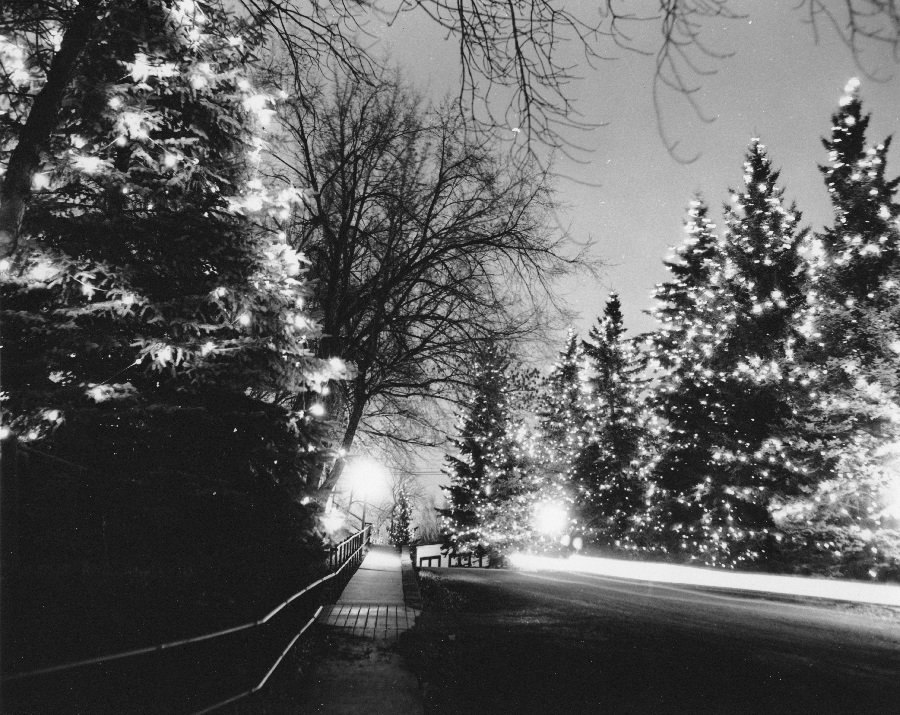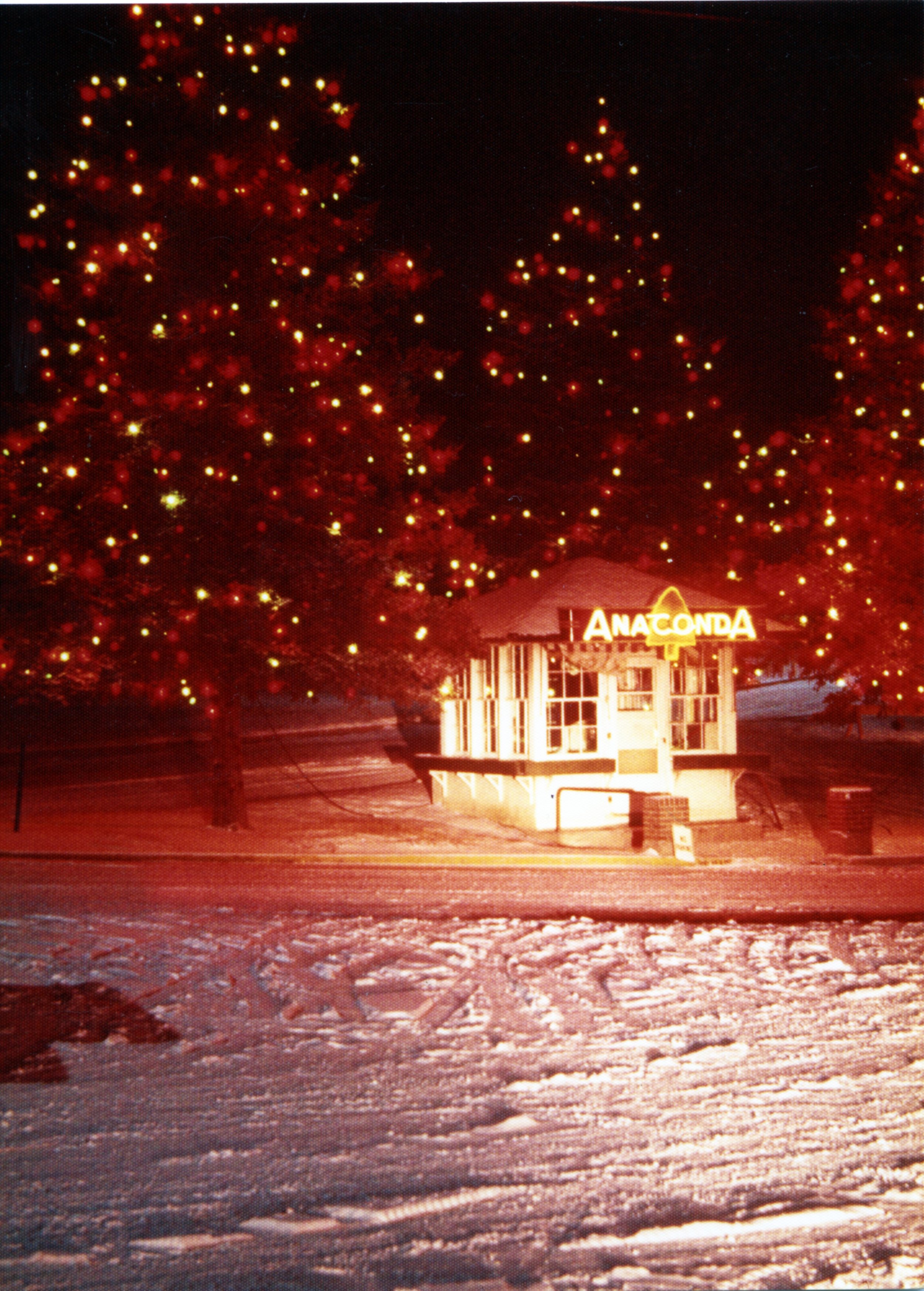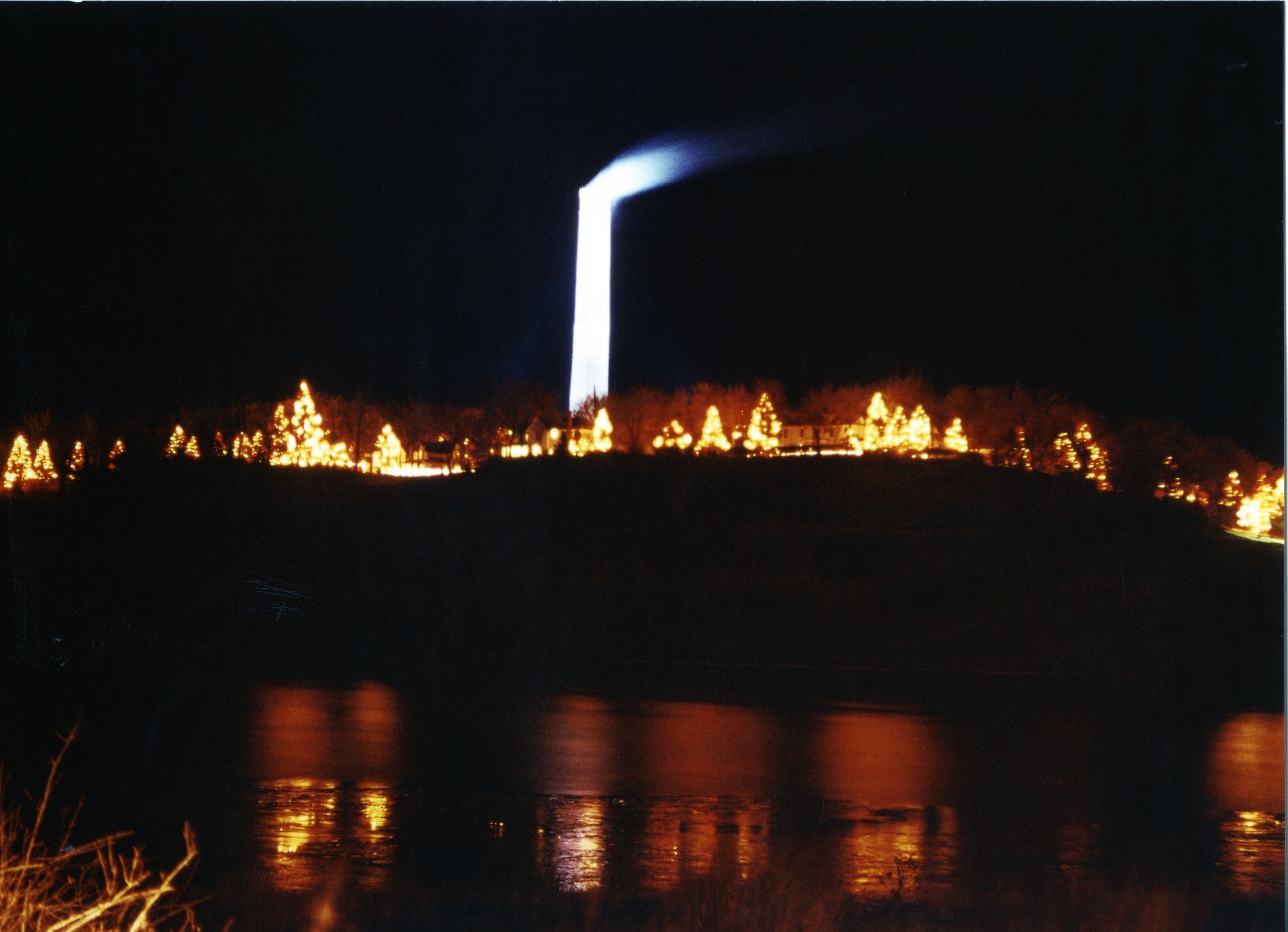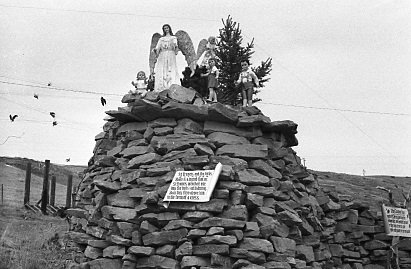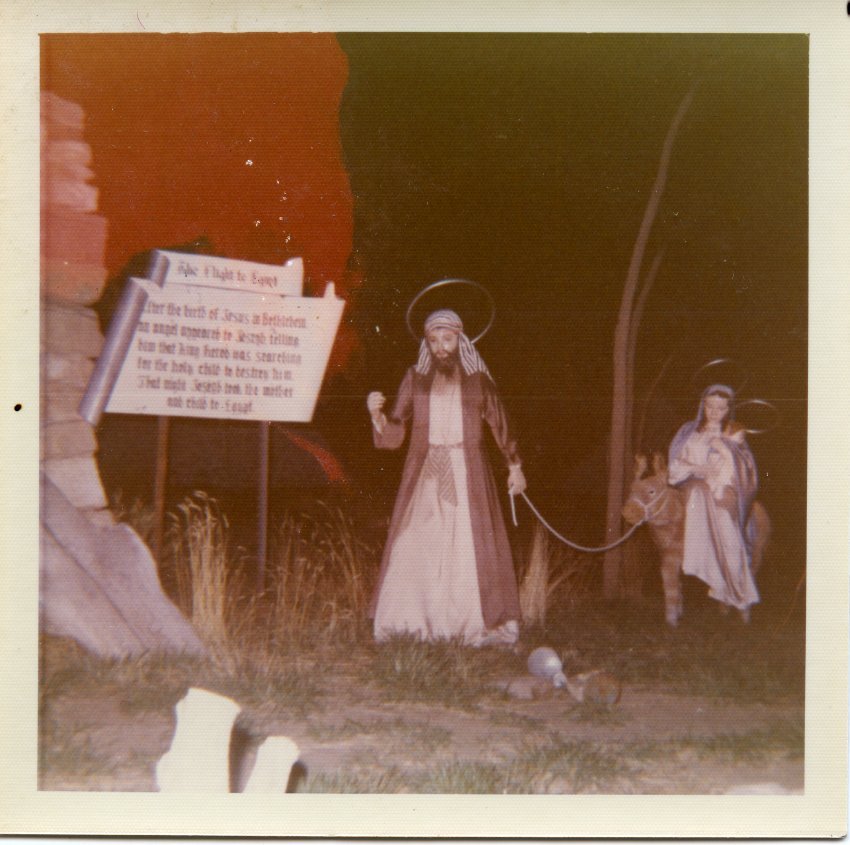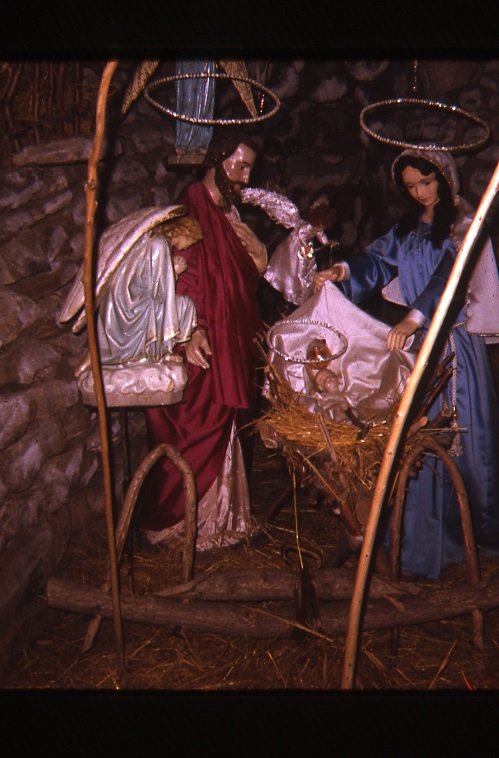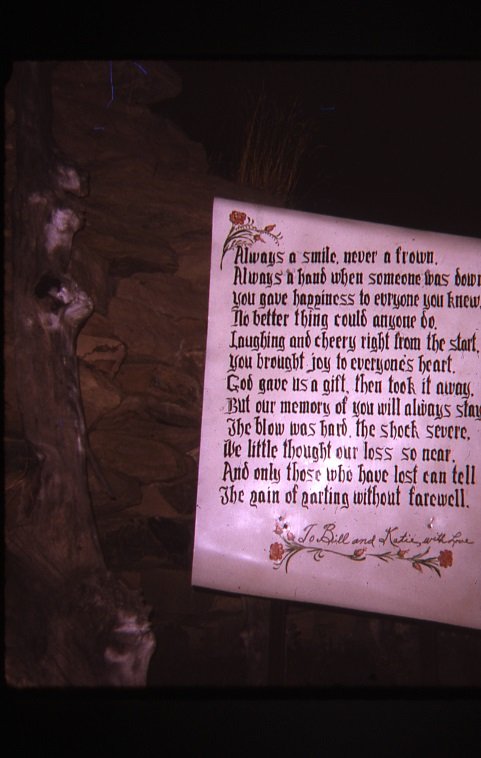Smelter Lights & the Grotto
Smelter Hill Christmas Lights
[2011.115.0001]
In 1920, the Anaconda Copper Mining Company (ACM) procured a large evergreen tree from near Monarch and set it up at the entrance to the plant. The tree was 40 feet tall and carried about 356 lamps, one for each day of the year. This tradition continued until 1932, when they began lighting additional evergreens that were near the large tree. Starting in 1934, the company also changed the streetlights to red, green and yellow during the holiday season. By 1940, 11,00 lights decorated the Smelter Hill.
In 1942, the war put the lights on hold, and they were instead used by East Base, Gore Field and the USO until the war ended, bringing the Hill back to life Christmas 1945. Each year more trees were lit with more lights, turning Smelter Hill into “Fairyland.” In 1965, 16,623 vehicles passed through the display. This beautiful and beloved tradition breathed its last in 1972. It was discontinued in 1973 due to “power shortage”. That same reason was given until the plant closed.
Images: Black and white photograph of ACM Christmas Lights. [1982.017.0094]
Color snapshot of ACM Company guard shack set among evergreen trees decorated with Christmas lights [1982.017.102]
Color photo of the ACM lights from across the Missouri River [1984.164.0003]
A string of lights once used at the ACM, donated to The History Museum’s object collection sits on a research table in the Archives Reading Room. Some bulbs are missing, and some are replacement bulbs. The colorful string is insulated with cloth, and many of the bulbs are etched with a tiny General Electric logo. [2015.088.1]
Smelter Hill was not the last job for some of the strings of Christmas lights. The Community Beautification Association (CBA) embarked on a project to transform Broadwater Overlook from the site of an asphalt hot mix plant to an attractive city park. After removing a thick layer of asphalt (12” in some places) the CBA planted trees to fill the barren hill. In 1978, while the young trees were still growing, the association installed a 30-foot cut spruce. The spruce was decorated by the association with wiring help from Malmstrom Air Force Base personnel, and the lights (some which dated back to 1925!) were donated from the Anaconda Company. Despite a vandalism incident in its first year which cut down strings of lights and support wires for trees, the Broadwater Overlook light display has become an annual tradition for Great Falls.
The Morang Grotto
Statue of the Virgin Mary in the Grotto installation, photographed by Elwis E. Cahalan, August 1963. [2011.159.0317]
In 1958, Joseph H. Morang began a labor of love that would touch many in Great Falls and the surrounding area. Mr. Morang had worked all his life at the Ayrshire Dairy and in his retirement, sought to do something meaningful with his time. And so began The Grotto. Mr. Morang created 13 scenes depicting the life of Christ, using wooden frames, rock, wire, and papier-mâché. He opened his display to the public in 1965 showcasing 13 scenes. He worked and added more scenes in later years. Over 200 tons of rock were used, the star over the Bethlehem scene weighing 500 pounds itself. The last scene added to it was in 1974, depicting a chariot bearing the body of King Josiah, the last righteous king of Judah in ancient times, home from Egypt. A guest book recorded 29,000 signatures, including people form 22 countries and all 50 states. Visitor counts reached at least 50,00 in 1973 and 1974. This ended in in 1975. On August 16, 1975, Joseph Morang shot himself. He left letters for his wife, employer, and the City of Great Falls.
“The letter was short and simple- a request that the city keep the Grotto open- commendation of our visitors for their kindness to us throughout the years- and Joe’s gratitude that he lived in a country where he was free to worship as he wished and in his way, to spread the teachings and love of Jesus Christ…. His letter is testimony to the fact that Joe himself didn’t realize how uniquely his, was the talent that created the Grotto- how little able anyone else would be to carry on his work. The spirit of the Grotto was the spirit of Joe, and the Grotto died when joe died. There was no possibility that I could have done it alone. So, I have given away the scenes and will sell the property…. May I ask that you remember in your prayers the shy, kind and gentle man who was Joseph Morang.”
-Mrs. Joseph H. Morang Letter to the Great Falls Tribune, November 11, 1975.
Snapshots of the Grotto:
Black and white negative by Ralph Pomnichowski for the Great Falls Tribune, December 1968. [2020.062.0222]
Three color slides of the Grotto, 1973-1975. [2022.035]


